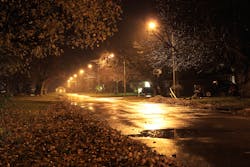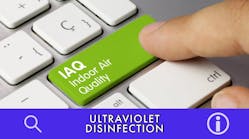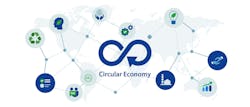Researchers call for consistent measure of light pollution
A team of researchers from Sweden and the U.S. is pushing to establish a common methodology for how to define light pollution and measure its astronomical, ecological, and human consequences.
Many studies have claimed ill effects of light at night (LAN) on stargazing, on flora and fauna, and on people’s health, but the lack of a uniform approach can make it difficult to reach universal conclusions and is hindering efforts to tackle the problems on a broad scale, note the authors of a paper published at the recent Lux Europa 2022 conference in Prague.
“In all three fields (astronomical, ecological and human), a plethora of methods are used for measuring the dependent and independent variables,” they point out in “An Overview of the Adverse Effects of Outdoor Light at Night and the Research Methods Used in Different Areas.” “This has unfortunately resulted in significant difficulties in comparing responses between geographical areas, species, and effects of LAN on human health. For example, despite the large number of studies performed on LAN impacts in all three fields, it is very challenging to assess if the lighting in a specific location has a negative impact and if so, how to reduce it to avoid inducing light pollution.”
The authors, led by Annika K. Jägerbrand of Halmstad University in Halmstad, Sweden, say there is a compelling need to resolve the inconsistencies, because a multitude of studies do indeed, in their own manner, illustrate the damaging effects of light at night across all three areas.
For example, they point to the lose-lose proposition that light at night can sometimes make some species more vulnerable to predators who normally only work by day, while in other instances it can shrink feeding grounds by undermining natural habitats, as pointed out in different studies.
But the methods applied in light pollution studies vary widely, they note.
“In ecology, for example, it is very rare to report light exposure levels for the organisms studied,” the authors say. “Inadequate reporting of lighting conditions in studies claiming to show significant effects of LAN makes the results and conclusions questionable since the studies cannot be repeated and because it is unknown whether effects can be attributed to LAN or to other influencing or confounding parameters.”
They also pointed out that existing studies do not always adequately rule out non-lighting factors.
Jägerbrand co-wrote the paper with Maria Nilsson Tengelin of the Swedish government’s RISE Research Institutes of Sweden and with Dorukalp Durmus of Pennsylvania State University in University Park, Penn.
The three did not study light pollution per se; rather, they examined previously published research, and concluded that “The study design and reporting of lighting conditions were not robust and there is an urgent need for establishing standardized experimental procedures, and for collecting data for the dependent and independent variables as well as for environmental and confounding factors that can influence the results in significant ways.”
Lux Europa 2022 ran from Sept. 20 through 22.
—
More from LEDs Magazine on light at night
Photos from space affirm that streetlights are emitting more blue spectra
LUNA requirements look to balance ecosystem and human needs in practice
Outdoor LED lighting could be increasing our overall energy use
Concerned about night skies, British county taps International Dark-Sky approved luminaires
Sea turtles thrive with amber LED lighting and dark sky advocates rejoice
MARK HALPER is a contributing editor for LEDs Magazine, and an energy, technology, and business journalist ([email protected]).
For up-to-the-minute LED and SSL updates, follow us on Twitter. You’ll find curated content and commentary, as well as information on industry events, webcasts, and surveys on our LinkedIn page and our Facebook page.

Mark Halper | Contributing Editor, LEDs Magazine, and Business/Energy/Technology Journalist
Mark Halper is a freelance business, technology, and science journalist who covers everything from media moguls to subatomic particles. Halper has written from locations around the world for TIME Magazine, Fortune, Forbes, the New York Times, the Financial Times, the Guardian, CBS, Wired, and many others. A US citizen living in Britain, he cut his journalism teeth cutting and pasting copy for an English-language daily newspaper in Mexico City. Halper has a BA in history from Cornell University.




![The DesignLights Consortium continues to make progress in shifting outdoor lighting products and implementation practices toward a more restrained and thoughtful strategy. [Image does not represent a DLC qualified fixture.] The DesignLights Consortium continues to make progress in shifting outdoor lighting products and implementation practices toward a more restrained and thoughtful strategy. [Image does not represent a DLC qualified fixture.]](https://img.ledsmagazine.com/files/base/ebm/leds/image/2024/08/66be810888ae93f656446f61-dreamstime_m_265700653.png?auto=format,compress&fit=&q=45&h=139&height=139&w=250&width=250)
